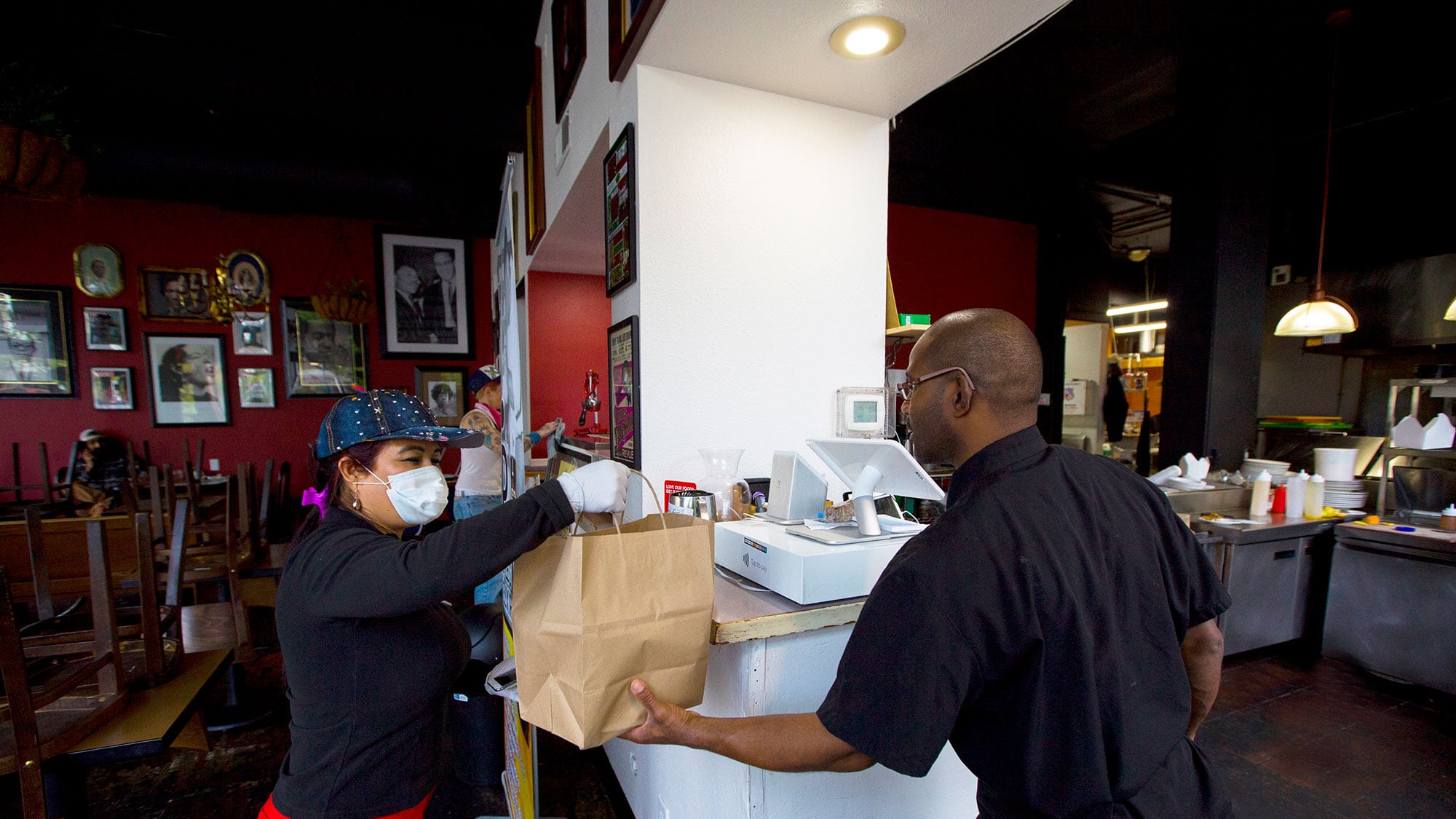Maria Guadalupe "Lupita" Bautista can't wait to get back to work. It also scares the hell out of her.
For the past 25 years, Bautista, 42, has worked as a hairstylist and beautician. Before COVID-19 closed down the shop where she works on Southeast 122nd Avenue, she might see as many as 15 clients a day—and she was one of a dozen stylists in the shop.
When she thinks about going back to work, she envisions a lot of people in a small space.
"I love my job and making people feel good about themselves," Bautista says. "But I'm also afraid."
Bautista chose to leave the beauty shop, seeing her last client March 16. She won't have much choice about going back.
She used the money set aside for April's rent to fill the apartment she shares with her two children, ages 20 and 16, with food. She needs an income. And if she doesn't fill her salon chair, another contractor will.
"I've been homebound in a small apartment for 48 days," Bautista says. "But there, I feel safe."

Gov. Kate Brown is under increasing pressure to reopen Oregon for business. She faces an unenviable choice. The longer shops and restaurants remain closed, the more economic livelihoods are jeopardized. But the sooner Brown lets nonessential businesses reopen, the more she puts people's health at risk.
"I think there's a real possibility we see more evidence of transmission, including more illnesses and death, as we start to replace physical distancing intervention with contact tracing," says David Bangsberg, dean of the School of Public Health at Oregon Health & Science University and Portland State University. "That's why we need to keep our eye on the data and go slowly."
The dangers and deaths from reopening Oregon will not fall evenly. They will land most harshly on the same people who have been hit hardest by closures and layoffs: blue-collar workers with little education.
These service industry workers are disproportionately people of color, who often lack access to health care and suffer from more preexisting conditions. The workers in this economic bracket who weren't laid off continued to clock in to jobs deemed "necessary." One result: Latinxs make up 29 percent of confirmed COVID-19 cases in Oregon but only about 13.3 percent of the state's population.
Brown is moving slowly—she won't reopen rural counties until at least May 15, and says Portland must meet strict criteria before reopening businesses here. Her caution is winning the applause of public health experts and the fury of rural Republicans.
John Tapogna, president of Portland economic consulting firm ECONorthwest, says Brown's choices so far have been correct. He adds that reopening quickly might not have the effect some business owners seek: Shoppers and diners are unlikely to flock back into group spaces.
Instead, they'll let service workers test the waters first.
"I'm glad I live in Oregon and not in Georgia," Tapogna says. "Until we have a vaccine, we have to listen carefully to what the virus is telling us."
As the governor ponders reopening the state, the stakes are highest for Oregonians on the front lines, whose jobs don't allow reliable social distancing. If they stay at home, they fall deeper into financial holes. But if they go back to work too soon, they could face a debilitating illness or even death. As WW spoke to workers pondering those risks, we found mixed feelings.

Lisa Davis-Warren is president of the Association of Flight Attendants local at Horizon Air in Portland.
She says planes have never been cleaner, but basic protective equipment such as gloves, masks, antiseptic wipes and hand cleaner have been hard to come by. "We've finally been provided masks," Davis-Warren says. "It's taken more pushing than I would have expected."
Although Brown's executive order didn't close Portland International Airport, she didn't have to. Travel at PDX is down about 95 percent.
Davis-Warren, 53, says she and her colleagues welcome the work that will come as the economy reopens but have one big worry: passengers who knowingly or not get on planes while carrying the COVID-19 virus.
"We still don't have passenger screening," Davis-Warren says. "It would be great if the airline could ask just a couple of questions, like: 'Do you have a fever?'"
Like the airlines, Oregon's hospitality industry has been decimated. One the tens of thousands who lost their jobs is Jessica Seidel, 46, who's been tending bar at the Standard in the Northeast Portland neighborhood of Kerns since it opened 13 years ago.
Seidel's been lucky: Her employer kept her health insurance in place, and unlike many workers filing for relief from the Oregon Employment Department, she's been successfully collecting unemployment. But she's raring to get back behind the bar.
"I miss my customers and co-workers," Seidel says. "That's my family. I don't do this job to be cool. I do it because I love it."
Seidel knows bars may be slow to reopen because social distancing and drinking don't mix, and she knows that in addition to exposing herself to customers' illnesses, she'll face unusual conditions. "I am fearful we are not going to have as many people in the bar—that they won't be able to hug, shake hands or play pool."

Renato Quintero, a janitor at Intel's Ronler Acres campus, has worked right through the shutdown.
Quintero, 53, is employed by a contractor called Somers Building Maintenance, but he's worked on Intel property for 18 years. He says in normal times, there are 4,000 to 5,000 people a day in the buildings where he works. Most are working from home now. Quintero, who works the day shift, worries about his safety when they all come back, as they are expected to do when Brown lifts her stay-home order.
He says Intel is conscientious about safety and personal protective equipment, but the sheer volume of bodies will make social distancing in hallways, cafeterias and other common spaces impossible. "There are just too many people in one small area," Quintero says. "That is the big danger I see."
In Hillsboro, where Quintero lives, he says there's a lot of talk about the high incidence of COVID-19 among Latinxs. "Most of the Latino population—even like me, who have legal status, we work in service jobs and our salaries are low, $13 or $14 an hour," he says.
Although Quintero has health insurance, he says many Latinxs delay or skip medical treatment, eat poorly and cannot take time off if they are sick.
He says among people he knows, there's a mixture of excitement and dread about the state's economy reopening.
"We every day are praying not to get [COVID-19]," he says. "We are really in fear that if we get the disease, it's going to make it harder for my community and our families."


